How to Take a Shower With a Baby at Home
How to Take a Bath or Shower with Your Baby (EPIC GUIDE)
|
Learning how to take a bath with my newborn and now showering with my older baby quickly became one of the best parts of our daily routine.
I want to share everything I've learned and all of the hacks we've picked up to make showering and bathing with your baby as easy and beneficial as possible.
You can bathe or shower with your baby as often as you want to. Check to make sure that the water temperature is correct and get all of your supplies ready beforehand. Then get in the tub without your baby since getting in and out can increase the risk of falling. Pick up your baby and bathe or shower together while keeping a solid grip on your baby the whole time and enjoy bath time together.
Keep reading to learn the exact steps to bathe and shower with your infant and take your baby bonding to the next level!
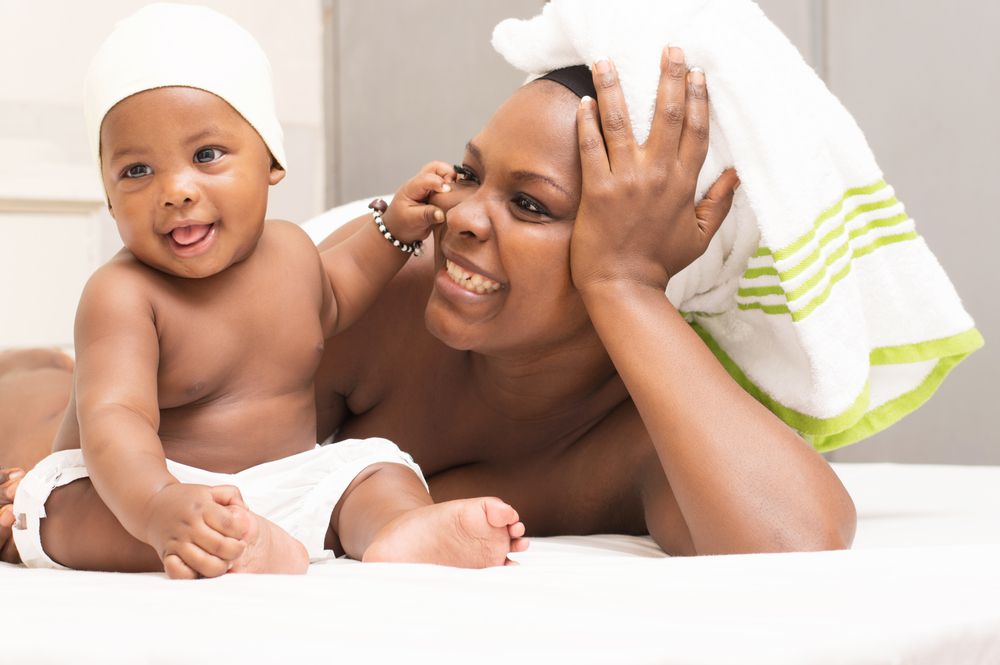
DISCLOSURE:Piece of Cake Parenting is a participant in the Amazon Services LLC Associates Program, an affiliate advertising program. As an Amazon Associate, I earn from qualifying purchases. Read more about these links in my disclaimer policy.
Ready to figure out your baby's sleep?
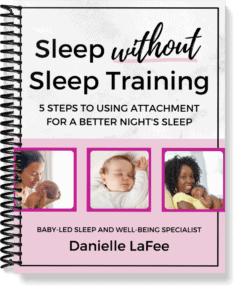
Ever feel completely lost on how to help your baby sleep better? Our Sleep Without Sleep Training Guide will show you how to use attachment to help your baby sleep better without any sleep training or cry it out. It's a game changer — get it free for a limited time!
Jump to:
🚿 Why would you even want to bathe with your baby? 🛀 Benefits of bathing with your baby 👶 Is it safe to bathe with your baby? 🚿 Common fears when showering with your baby 🛀 When can you start taking a bath or shower with your newborn? 👶 How often can you bathe with your infant? 🚿 You're ready to bathe with your baby. What do you do now? 🛀 What are the best positions for bathing with your baby? 👶 What are the best positions for showering with your baby? 🚿 What should you know about bathing with your older baby? 💭 Final Thoughts
Why would you even want to bathe with your baby?
The first time I heard about bathing and showering with baby, I'm pretty sure I had the most confused lookever on my face.
I couldn't help but wonder why I would even want that. 😬
I love bonding with my baby, but I was convinced that this would be super awkward and way too challenging for this uncoordinated mama.
Luckily for me, I have some awesome mom friends who helped to teach me a little more about co-bathing with a newborn.
Benefits of bathing with your baby
Showering or bathing with your baby (during the newborn, infant,and toddler ages) is full of so many benefits for both you and your baby.
Here are a few of my favorites that helped to convince me to give it a try.
1. Taking a bath with your baby is a powerful way for you to bond together.
To get the full benefits of skin-to-skin bonding, you are recommended to spend at least 60 minutes a day of direct skin contact between you and your baby.
For me, this easiest way to make sure we hit the 60 minute mark was to bathe together.
Co-bathing with your infant unlocks all of the benefits of skin-to-skin bonding with your baby and promotes a much deeper connection between the two of you.
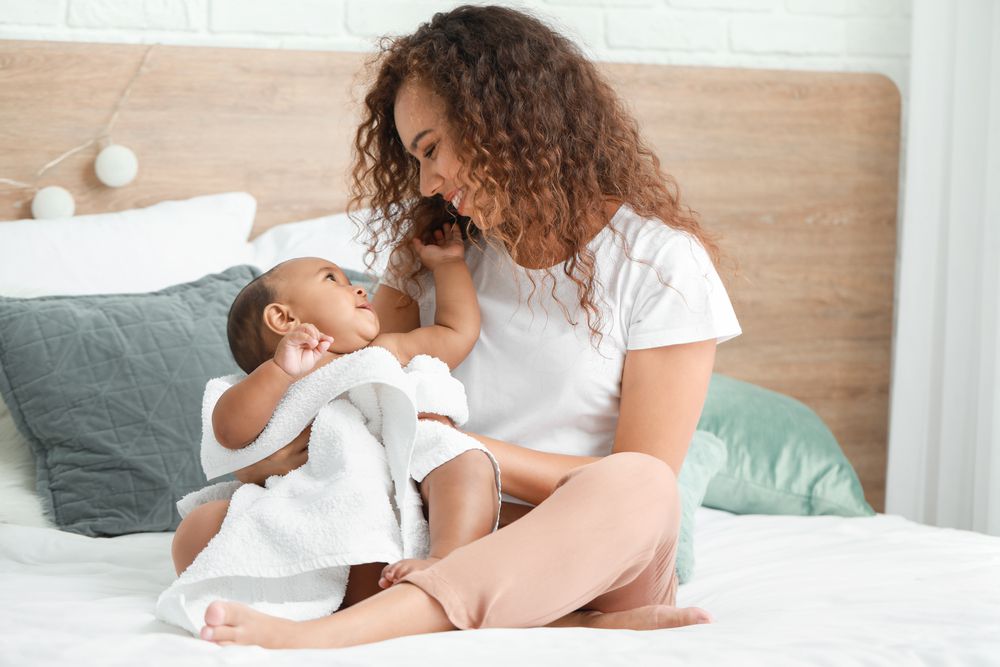
The very first time I took a bath with my baby, he snuggled closer to me than ever before and we were able to bond at an even deeper level than I thought possible.
Just like that I was hooked on the benefits of taking a bath with baby.
I also love that this bond continues as your baby gets older. My baby is 12 months old now and he adores snuggling, splashing, and playing with me every time we bathe or shower together.
2. Co-bathing with your newborn helps with successful breastfeeding.
Breastfeeding a newborn is hard. Really, REALLY hard.
Luckily, bathing with your baby is one of the best ways to help promote a good breastfeeding relationship.
The warm water and close bonding with your baby stimulates your let-down reflex. This helps to increase your milk supply any time that you're struggling!
I also loved nursing while bathing with my newborn when I was still figuring outhow to breastfeed. I didn't have to worry about leaking or forceful letdown on the opposite breast or anything because we could just clean up in tub afterward.
3. Bathing with your baby helps to soothe a crying baby.
A wise mama recently told me, "If your child is upset, just add water. This usually seems to fix things."
This is so incredibly true for my baby! Even on the fussiest evenings during the peak of our "period of purple crying," a bath with mom would fixeverything.
Bathing with your infant helps to calm down your fussy baby because the bath is warm and relaxing and your baby is able to bondsuperclosely with you.

4. Showering with your baby saves a ton of time.
All new moms know how challenging it is to find the time to shower with a newborn at home.
Luckily, showeringwith your infant means you can always find the time to shower without worrying about squeezing in a shower during your baby's naptime or listening to her cry the entire time you put her down.

See how I can help you solve your biggest parenting challenges.
⭐ Sleep Without Sleep Training
⭐ Impactful, Stress-Free Play Routines
⭐ Emotions and Crying
⭐And More!
Is it safe to bathe with your baby?
Okay, okay. I know where your mind is going next. 👇
These benefits sounds great, but it isactually okayto take a bath and shower with your baby? How can you really do this safely?
Great news! If you research correctly beforehand and keep reading all of the how-to information in this post, you can definitely be safe while bathing with your baby!
Common fears when showering with your baby
If you're like me, as soon as you start to plan how to bathe with your baby and think about how to do thissafely, tons of fears start popping into your head.
Here are a few of the most common fears when co-bathing with your infant and how you can make sure these fears don't come true for you.
1. You're worried that bathing with your baby will be weird.
I hate to admit it, but this was one of my top fears!
I am anincrediblyprivate person and I just wasn't so sure about being naked and bathing with my baby. I was pretty positive that it was going to be super awkward.
But those bonding benefits I mentioned before areno joke. Literally as soon as we started our first bath together and my baby snuggled up so closely against my chest, I was hooked.
If you're worried about this, I highly encourage that you just give it a try. Push aside your worries and commit to trying a few showers or a few baths with your baby.
If it feels awkward, you can always stop. But you'll probably be surprised and love it too!
2. You're worried about dropping your baby.
This is the number one fear for most parents when they start to bathe and shower with their baby.
Wet babies areslippery!Surely we'll drop the baby!
Yes, wet babies are slippery.But don't worry!
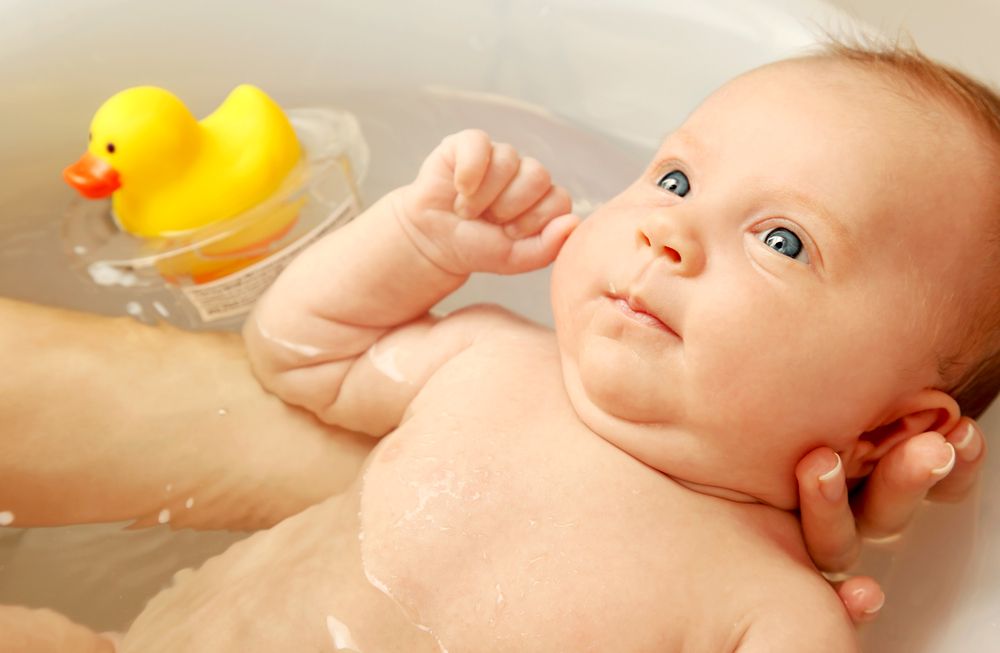
Once you know the steps to take, the positions to hold your baby, and the pro-tips specifically for showering with your baby, you won't ever have to worry about dropping your baby while showering.
Make sure to keep reading the rest of this guide so you know exactly how to prevent this fear from coming true.
3. You're worried that you won't be able to shower properly.
Parents also worry that they won't be able to focus on their own shower if they're worried about baby the whole time.
No worries, you can definitely shower properly and thoroughly wash yourself every time you take a bath or shower with your baby.
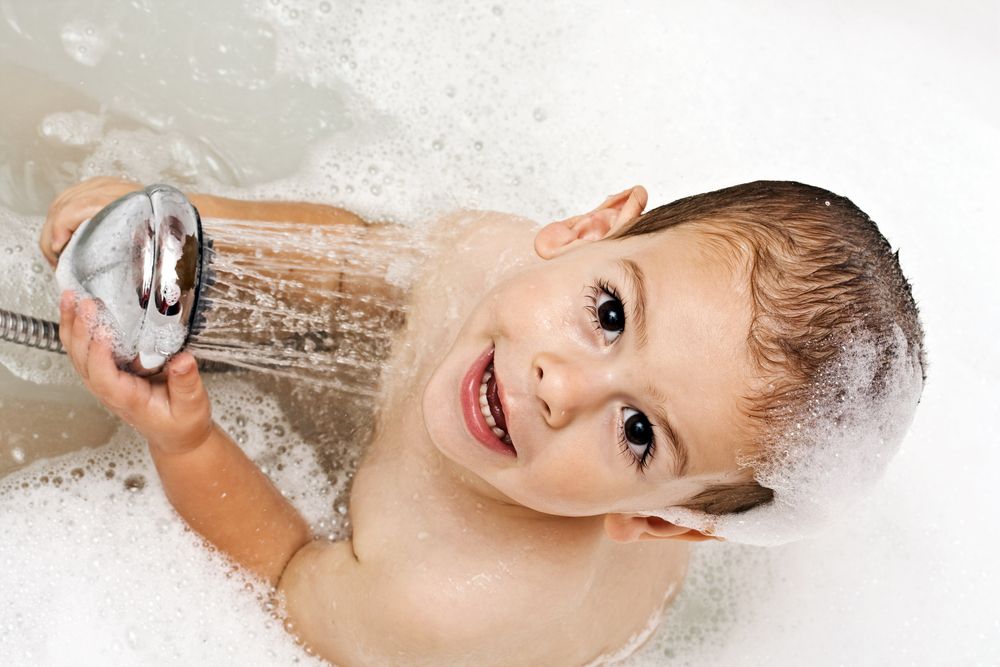
In my step-by-step guide below, I'll tell you how to work with a partner or by yourself to make sure you always get in a great shower while bathing with your baby!
When can you start taking a bath or shower with your newborn?
Although you might be excited for this bonding opportunity with your baby, you typically don't want to start showering with your newborn as soon as you get home from the hospital.
Your baby will still have her umbilical cord stump for about 7-21 days after she is born. You want this to dry out completely so that it can fall off properly and avoid an umbilical cord infection.
This means that you should never submerge your baby's umbilical cord stump and should wait to co-bathe with your newborn until after it has fallen off.
During those first few weeks, stick with sponge baths every few days and just use a wet rag to wipe down your baby a couple times a week.
How often can you bathe with your infant?
Until your baby's umbilical cord falls off, you should never bathe or shower with your baby.
Instead, help to give her a sponge bath a couple times a week using just water or water with a small amount of soap made specifically for babies.
Once your newborn's umbilical cord has fallen off, you can co-bathe together a couple times a week. You still want to avoid taking too many baby baths because this can dry out your baby's sensitive skin.
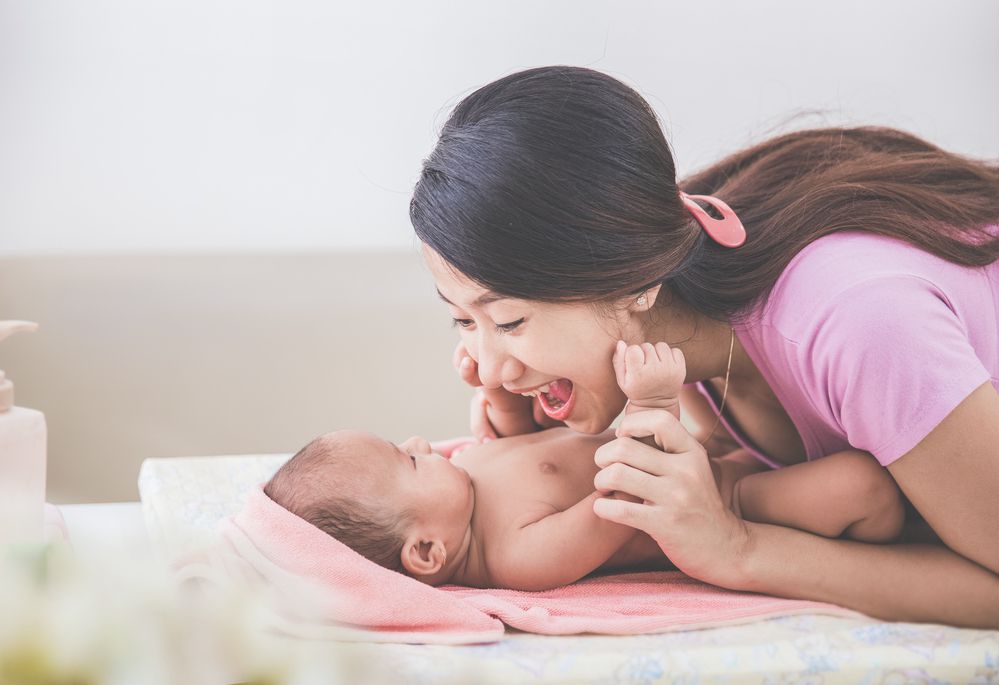
Once your baby is about six weeks, you can bathe together a little more often if you want.
Some parents will stick with baths 2-3 times a week, some will bathe every other day, and some do baths with soap one day and a water-only bath the next day to avoid drying out baby's skin.
Now that our baby is 12 months old, we do bath time as needed.
Because he's busier during the day, he needs a bath a few evenings a week to wash up from a busy day playing outside.
He also has a tendency to pee through his diaper a few nights a week, so sometimes he takes a morning shower with me instead. We just try to keep an eye on his skin and avoid using soap more than once every couple of days.
You're ready to bathe with your baby. What do you do now?
Below you will see my very detailed, step-by-step guide for what you need to do before, during and after you co-bathe or co-shower with your baby. I've also got pro-tips on how you can make this go as smoothly as possible.
Step 1: Double check your baby's umbilical cord.
I know I already mentioned this, but make sure to double check if your baby's umbilical cord has fallen off. If it's still there, be patient and stick to sponge baths for a little longer so you can avoid any infections.
Step 2: Check the water temperature.
Your baby is much more sensitive to water temperature than you are.
You want the temperature to be about the same as your body temp or just a little warmer.
You can test this by touching the water with the inside of your wrist (your skin is more sensitive here) or by putting a thermometer in the water so you know exactly how warm it is.
If it's too hot, your baby can easily overheat or burn her skin. If the water is too cold, your baby will probably be crankier and is more likely to shiver and get too chilly.
Take a few minutes to test out the water temperature before stepping into the tub with your baby and things will go much more smoothly.
Step 3: Get everything ready beforehand.
Trust me. You don't want to have to reach all across the bathroom once you've gotten in the tub or the shower with your baby. It is challenging, it gets everything wet. And it increases the chances of you dropping your baby.
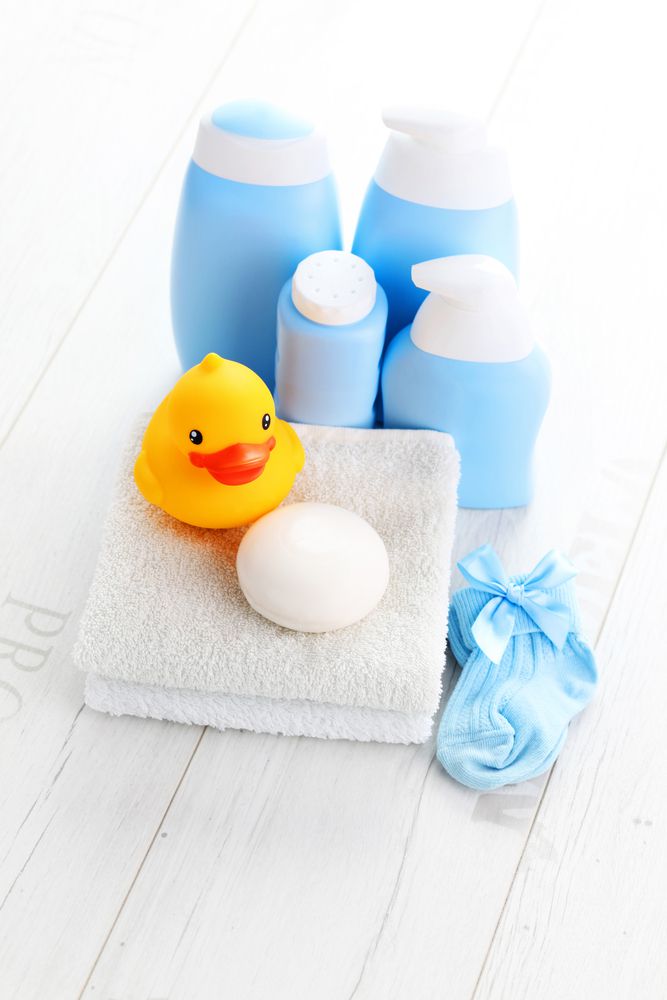
As you get ready, take a few minutes to make sure to gather everything you needbefore you start. You want to have all of your shower supplies ready, plus anything you need for your baby.
I'll link a few of our bath time favorites below so you can see what we have ready for our baby when we start our bath.
Step 4: Enter the water safely, without your baby.
You have the highest chance of dropping your baby when you enter and exit the water. To be safe, you need to make sure to put down your baby and get into and out of the tub alone.
With a Partner's Help:
One of the easiest ways to do this is to have a partner help during transition times. Have your partner hold baby while you step into the water.
If you're taking a bath with your baby, get yourself situated first. If you're showering with baby, make sure that you have steady footing.
I recommend a good shower mat to prevent yourself from slipping, both while showering and bathing. This one is super affordable and helps you to feel more steady and confident while co-bathing with your baby.
Once you're steady, ask your partner to pass your baby into the tub with you. This ensures that you are ready for your baby and aren't at risk of losing your footing with your newborn in your arms.
Ask your partner to help again at the end of the bath. Pass off your baby and then use the next few minutes of alone time to wash yourself thoroughly before you get out of the shower.
Again, this ensures that your baby stays safe and you have a little alone time to shower too.
Bathing and showering alone with your baby:
If you don't have any help around, don't fear! You can still safely transition into and out of the tub and enjoy the benefits of showering with your baby.
The main thing to remember is that you don't want to be holding your baby while you step into and out of the tub because you are much more likely to drop your baby at these times.
Ihighlyrecommend that you get one of these bath chairs for your baby. They are super affordable and perfect for your baby at every age.
Our baby was only 6 pounds when he was born, and he was able to use this bath chair on day 1 during our newborn sponge baths. As he got bigger, he continued to use this same bath chair to support him and it worked perfectly until he was old enough to sit independently without needing extra support.
Step 5: Make sure that you have a steady grip on your baby at all times.
You want to make sure that your baby is never at risk of being dropped.
If this happens, she could fall and hit her head or become submerged under the water. This means that it'svery important that you have a steady grip on her during your entire bath or shower.
First, consider buying these bath gloves. They make it easier to grip and hold your slippery baby and also act as a washcloth when you are ready to clean your baby.

Next, if you want to be extra cautious, I highly recommend buying a waterproof baby carrier.
You can wrap your baby up tightly and ensure that you don't drop your baby while showering together. Plus the bonding you will get while baby wearing isincredible!

Like I mentioned before, I also think this baby bath chair is one of the best purchases you can make for your newborn. It makes bath time so much easier, both when you co-bathe and when your baby bathes by himself too.

If you really don't want to purchase anything extra, you can still bathe and shower with your baby, but remember that your babywill be slippery.
Make sure to pay super close attention to your baby and also make sure that you always have a firm grasp on them so they don't fall.
Step 6: Make sure that your baby stays warm.
When you bathe with your baby, they are often sitting up on your body and don't have as much of his body in the water. Likewise, when you shower, you are often standing between the water and your baby.
In both of these scenarios, your baby is more likely to get cold then if they were bathing alone.
While bathing, I recommended having a water cup with you that you can use to regularly pour warm water over your baby so they stay warm and relaxed while you cuddle and wash them.
While showering with your baby, try to turn around so baby is also sprayed by the water occassionally.
Smile and act natural so you baby isn't scared and avoid putting them under the shower head for extended periods of time.
You can also gently splash your baby throughout your shower or fill your water cup to pour water over them to keep your baby from getting cold while you shower together.
Step 7: Keep your bath or shower short and sweet.
Although the cuddles are great and it can be tempting to spend all day snuggled in the tub, try not to stay in the water too long.
Your baby's skin is very sensitive and taking too long of a bath or shower is more likely to dry out their skin.
Our family has also noticed that there is a fine line between when bath time is fun and when our baby is way too tired. We try to keep bath time to 15 minutes or less to avoid getting overtired or drying out his skin.
Step 8: Get out of the water safely (again, without your baby).
Remember, the most dangerous time for your baby is when you are getting into and out of the water because that is when you are the most likely to trip, fall, or accidentally drop them.
Use the same techniques as you did before to make sure that you put your baby down and then safely exit the water alone.
Once you are out of the tub and have stable footing, you can pick up your baby again.
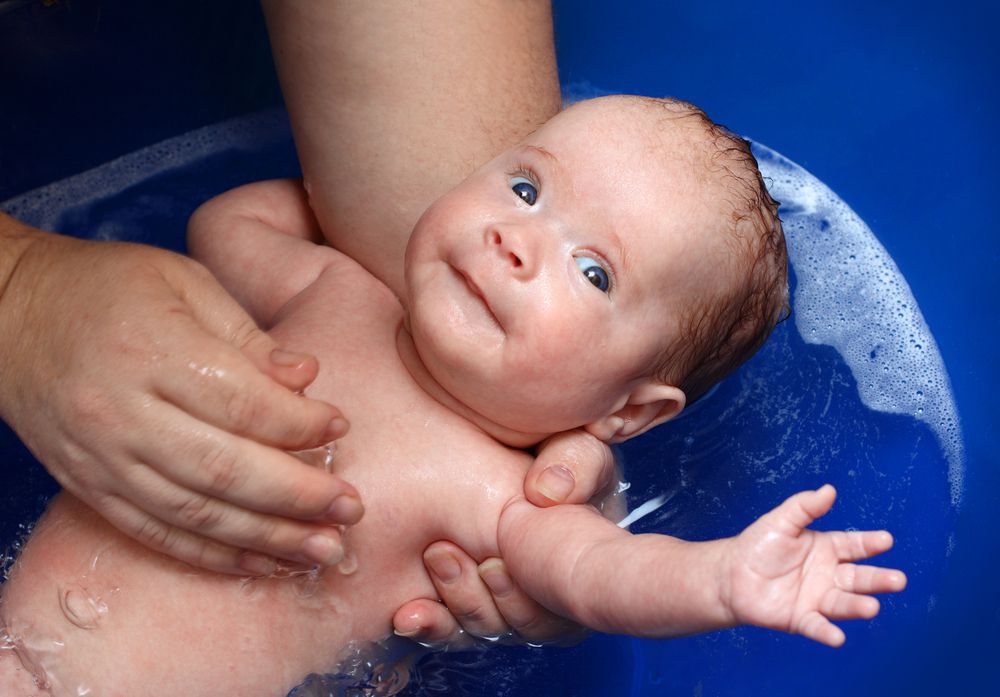
Now that my baby is older, he sits on the opposite side of the shower while I clean myself. Then I pick him up to clean him off. I end the shower by putting him back on the shower floor and putting in the stopper for the tub.
We add water and he plays in the tub for a few more minutes while I step out of the tub safely, dry off, and get dressed. Once I'm ready, we end his mini-bath and I can help him out of the tub too.
This routine works like a charm for us while I get ready for work in the morning.
Step 9: Dry off your baby.
Once you finish your shower, make sure to wrap your baby in a warm towel and dry them off completely. This will keep them stay warm and prevent any yeast infections if their skin stays wet (especially in her diaper area).
If your baby is fussy after getting out of the tub, you can use these tips to help calm your baby after bathtime.
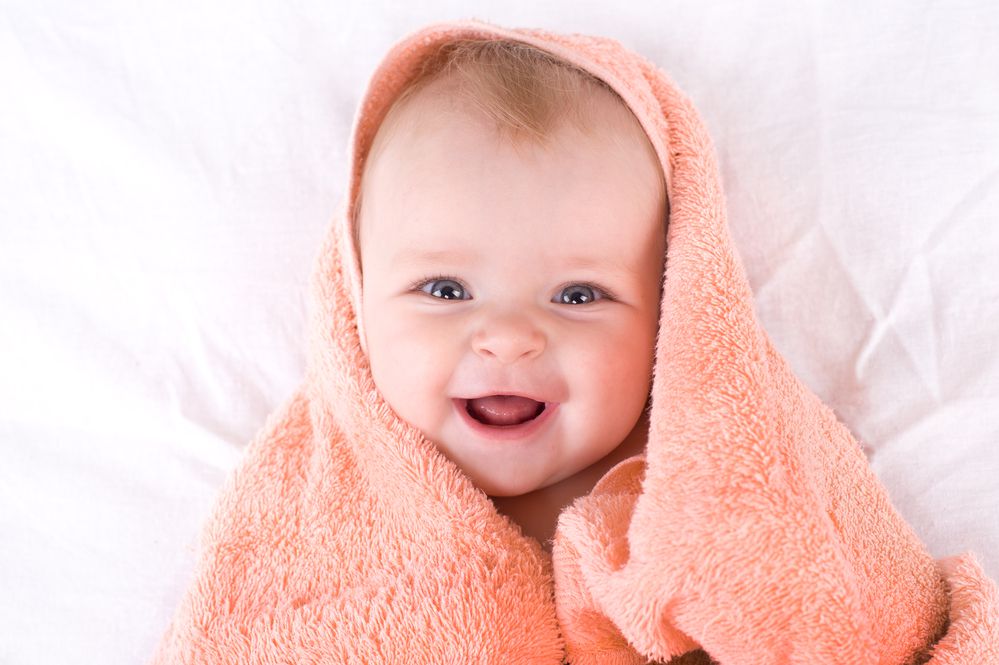
After you're done drying off your baby and getting her dressed again, I recommend helping to brush your baby's teeth so this becomes part of her routine from a young age.
What are the best positions for bathing with your baby?
If you're bathing with an older baby, you can sit in the tub together and play in any position that feels right for the two of you.
However, while bathing with my younger baby, I have three main positions that I prefer.
1. Place your baby face up between your legs:
Sit in the tub with your legs together. Set your baby between your legs facing up and looking at you.
This is a very stable position, so your baby will stay safe the entire time. It's also great a great position so they can look up and make eye contact with you while you talk and bond throughout your bath.
2. Place your baby face down on your chest:
Lean back against the wall of the tub and cuddle with your baby against your chest.
This is such a magical position and you can literally feel all of those newborn bonding hormones floating all around you.
When your baby is really young, just be extra careful to support their neck so they don't wobble around on you.
3. Breastfeed your baby while you take a bath together.
Breastfeeding works so well in the tub.
This was pretty much the only place that I tried to do the laid-back breastfeeding position because I always felt way too uncoordinated everywhere else. I also loved the normal cradle and cross-cradle breastfeeding holds in the tub.
What are the best positions for showering with your baby?
I also have three main positions that I like to use while showering with an infant.
1. Use a baby chair while showering with your baby.
You probably have guessed this, but I think having a great baby bath chair is one of the most important parts of successful showering with your baby.
You can put your baby in the baby chair and know that they will stay stable and safe while you stand and shower off. You also don't have to worry about holding onto their slippery body while you lather and rinse yourself.
You can pick up your baby later during shower, or just bend down and wash your baby while they stays in her baby chair.
2. Hold your baby so they are facing toward you:
Cuddle with your baby while they are facing you. You can hold them against your chest with one arm under their bum and one arm across their back and shoulder.

As your baby gets older, you can balance your baby on your hip. But while your baby is still small, this position can be a little tricky to feel stable with right away.
If you're worried about your slippery baby, I recommend using a waterproof baby carrier if you want to feel more stable. Especially for the first few times while you are getting used to everything.
As your baby gets older, you can balance them on your hip to give you a little extra support and stability.
3. Hold your baby so they are facing away from you:
Once your newborn is a little older and has more neck control, you can reverse your hold and have your baby face away from you. Again, put your arm across your baby's chest and between your baby's legs so that you get as much support as possible.
Use your other arm to balance and clean your baby and feel free to balance your baby on your hip with this position too so you have a little more support.
What should you know about bathing with your older baby?
As your baby gets older, some parts of bathing together get easier. For example, you don't have to be so aware of supporting his neck. This frees up your extra hand for more playing and helping to wash yourself and your baby.
However, some aspects of co-bathing get a little more challenging. Here are a few pro-tips to help you out when you are showering with your older baby.
1. Your baby will probably be more wiggly.
As my baby gets older, he is so much more interested in everything around him. Instead of snuggling peacefully, he wants to play more. This is really fun for us, but it can make it harder to hold him safely while we are showering.
When you pick up your older baby in the shower, try to give her a toy or something to hold on to. This will keep her hands busy and distract her so that you can add soap and water without worrying about dropping your wiggly baby.
2. Your baby will be more distracting to you.
Again, as your baby grows older and gains more skills, he moves around more and will probably be much more active in the tub. This can be a little distracting while you are showering.
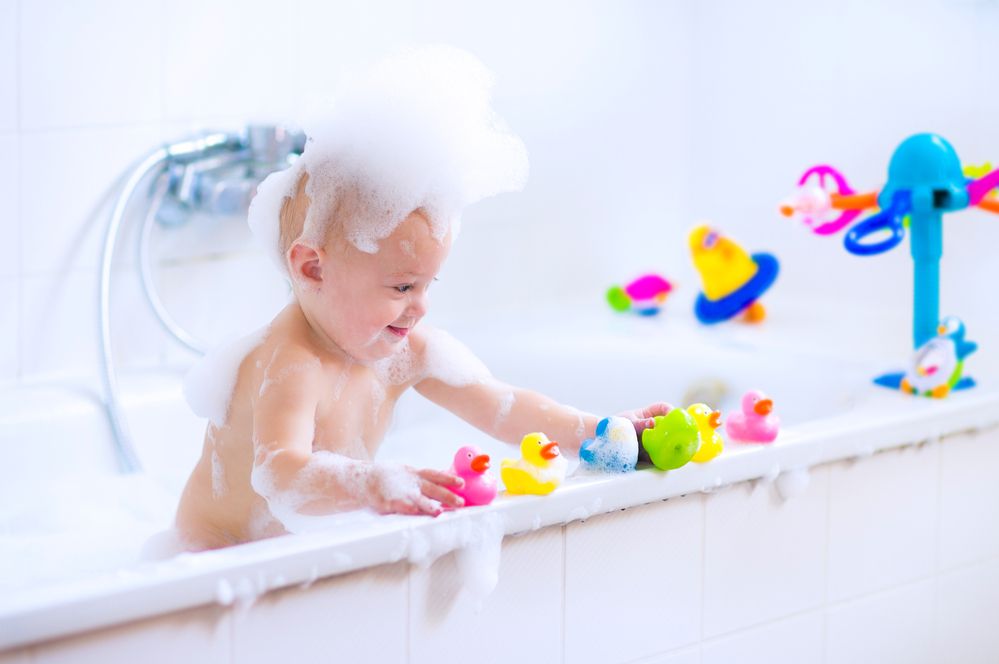
My one year old has recently become fascinated with the shower curtain.
He sits on the shower floor while I wash off and typically tries to open the shower curtain during our entire shower. I pull it shut and then he pulls it open again.
It's a little more distracting for me but is really cute watching his big grin every time he manages to open it a little.
3. Older babies have new safety concerns to watch for.
Older babies have a tendency to want to stand in the bathtub and often pull themselves up on the side of the tub.
This can be very dangerous for your baby because the bathtub is incredibly slippery when it is wet. They can easily slip and fall and then bump her chin or head against the wall of the tub.
Make sure to watch your baby carefully and help her to sit down every time she stands up.
What are some tools that will make it easier to bathe and shower with your baby?
Now that you know everything there is to know about bathing and showering with your baby, I wanted to share a few of my favorite reommendations with you.
As we've added this into our routine, we've learned that a few tools make it much,mucheasier to safety co-bathe and co-shower with our newborn and older baby.
Here are my favorites for you to try out if you want to make bath time even more fun and safe at your house:

This bath spout cover is a great way to make bath time more fun and keep your baby's noggin safe from any bumps and bruises during bath time.

This bath toy thermometer is exactly what you need to always make sure that your bath water is the right temperature for your baby.

These Little Squirts bath toys are super fun to play with! My baby always giggles so much every time we squirt him with these cute toys.

When you want to have an extra fun bath, use this bubble bath (which also doubles as shampoo and body wash)!

Don't like the blue baby bath chair that we got for our baby? Try out this grey one instead. It is so stable and supportive for newborns and older babies.

When you don't feel like hopping in the tub with your baby, this bath kneeler and elbow support mat is a must have so you are more comfortable!
Final Thoughts:
💬 Have you ever bathed or showered with your baby? What tips do you have for other parents trying it for the first time?
*Piece of Cake Parenting is a participant in the Amazon Services LLC Associates Program. As an Amazon Associate, I earn from qualifying purchases. Please visit Piece of Cake Parenting's Terms of Service, Disclaimer, and Privacy Policy for more information.
Ready to figure out your baby's sleep?

Ever feel completely lost on how to help your baby sleep better? Our Sleep Without Sleep Training Guide will show you how to use attachment to help your baby sleep better without any sleep training or cry it out. It's a game changer — get it free for a limited time!
How to Take a Shower With a Baby at Home
Source: https://pieceofcakeparenting.com/how-to-bathe-and-shower-with-baby/
0 Response to "How to Take a Shower With a Baby at Home"
ارسال یک نظر